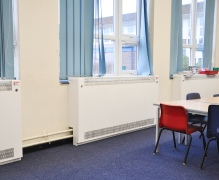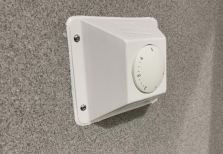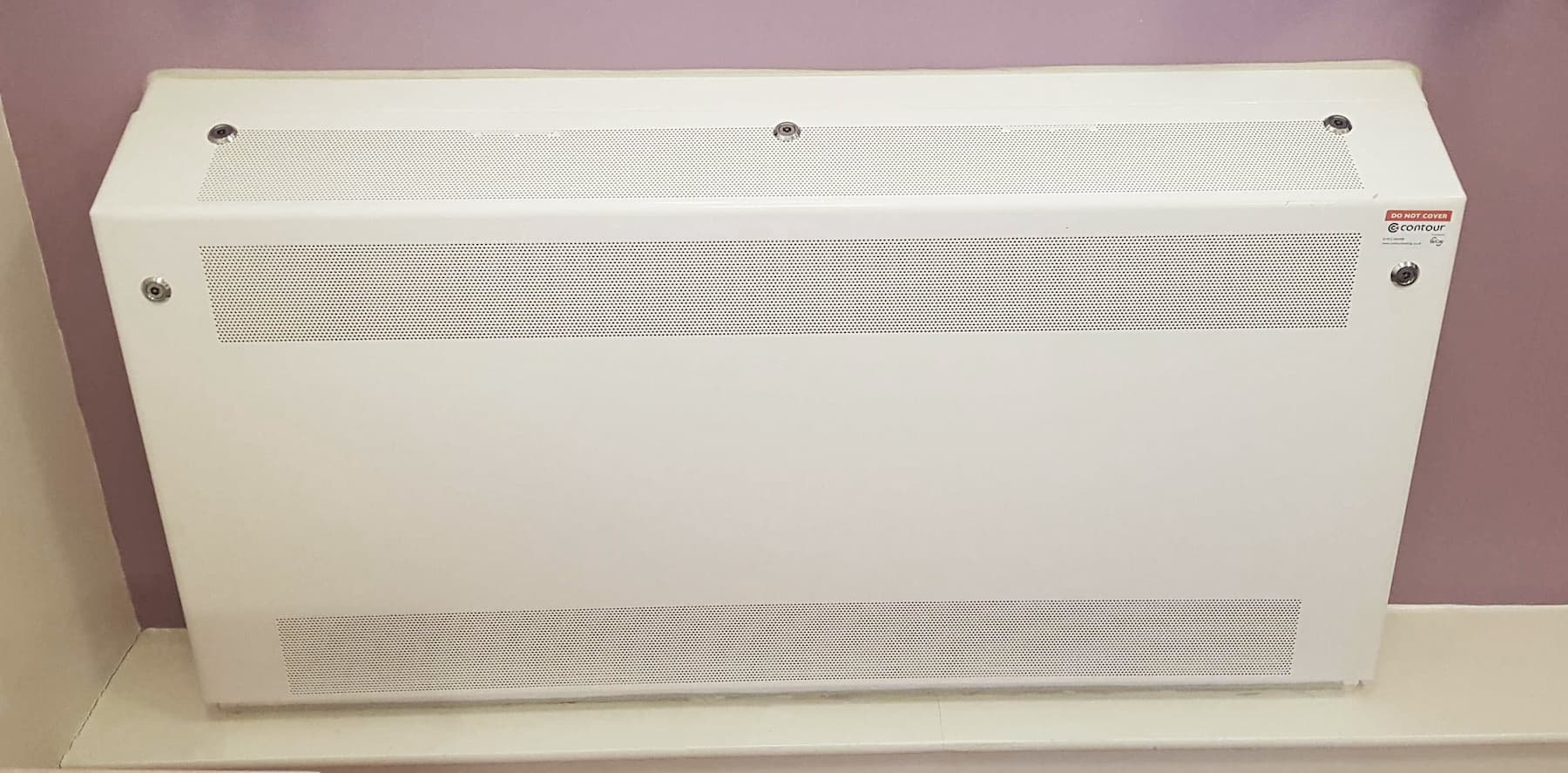Whether you’re specifying heating options for an entirely new development or looking for options as part of a refurbishment, selecting the correct heating products is critical.
Whether it’s a hospital project, a care home, or an educational environment, there’s a lot to think about.
You need to make sure that regulations and guidelines are being met, that the heating solution is well suited to the environment, that it is safe for those in the surrounding environment as well as considering a whole range of other things.
In this blog, we explore how low surface temperature radiators can be used in these environments and compare them with radiant ceiling panels to determine where you should use each and on what project.
What is an LST Radiator?
A LST or low surface temperature radiator is a heating product that doesn’t exceed a surface temperature of 43oC. This means that it is fully concealed and safe to touch, ideal for environments such as schools, hospitals and care homes where potentially vulnerable people could easily come to harm.
A safer alternative to traditional radiators, low surface temperature radiators are a common heating option when specifying in the public sector, and often include unique design features that make regular cleaning and maintenance far easier.
Advantages of Low Surface Temperature Radiators
Depending on the type of project, LST radiators make for an obvious choice if you are working on a refurbishment project where you are upgrading the existing heating system. This is due to pipework routes already being in place or if they need to be added to, this is an easy task to carry out.
Because they are readily available, LST radiators often make for a much more obvious heating solution.
Like radiators in general, they are quick to come up to temperature and react fast to changes in desired temperature.
Disadvantages of Low Surface Temperature Radiators
Although they seem like an obvious choice, there are some projects where low surface temperature radiators would not be an ideal fit.
For instance, in places where some corridors might be particularly narrow, installing an LST radiator would significantly reduce wall space.
Depending on certain models, they can also be a breeding ground for dirt and dust. That’s why Contour’s range are designed with cleanliness and hygiene in mind, allowing cleaning teams to remove any dust, quickly and efficiently.
Using a unique pivoting device called Rotarad, radiators can be dropped down towards the floor in order to clean behind them. This means that not only do Contour covers help aid in the cleaning, but the radiators themselves can be adapted too.
It’s important that prior to any installation that a full survey is conducted by a heating professional who will guide you on the best possible solutions.

What is a Radiant Ceiling Panel?
As the name would suggest, these panels radiate heat from the ceiling and warm-up solid objects in the surrounding area. Similar to traditional radiators, radiant ceiling panels can be heated using water, while there are also electric versions that generate heat waves through electrical resistance radiant ceiling panels radiate heat, warming up solid objects in a single area. Unlike traditional radiators which rely on heated water systems, radiant ceiling panels use electricity to produce a gentle type of infrared energy.
Advantages of Radiant Ceiling Panels
One of the key advantages of ceiling panels is very similar to the advantages of using underfloor heating. It has an incredibly sleek design and frees up space to manoeuvre around tight corridors and rooms.
Then, with this freedom of space, environments can become much more hygienic and are easily maintained.
Disadvantages of Radiant Ceiling Panels
Unfortunately, they’re not without their downfalls either. Radiant panels can be difficult for some mental health service users to distinguish, causing unwanted panic. Dementia patients can be confused by the fact there isn’t a radiator in the room giving off heat.
They can also be quite overwhelming for vulnerable people as the heat is a constant bearing from above, often times making them feel quite sick.
Depending on the type of project, radiant ceiling panels may not be a viable option depending on the ceiling in each room.
To Sum It All Up…
Ultimately, when it comes to selecting LST radiators or radiant ceiling panels it depends on the type of project you are specifying for.
Is the infrastructure in place, what are the size of the rooms, is it a new project or a retrofit? Everything has to be considered before you can make a concrete decision on the best heating options for you.
The most important thing is, there are options available and heating product experts are on hand to guide you.
-1.png)





















